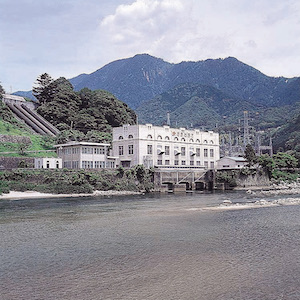The magnificent Momosuke Bridge offers a scenic walk across the width of Kiso River. On the far side from Nagiso Station one can find plenty of spots to relax, as well as learn history that is by turns impressive, heartwarming, and tragic.
Momosuke Bridge (Nationally Designated Important Cultural Property)
Built by President Momosuke Fukuzawa for the transportation of construction materials for the Yomikaki Power Plant, Momosuke Bridge is a total of 247 meters long, making it one of the longest wooden bridges in Japan. It is also sometimes called “The Bridge of Peaches” after the kanji character 桃 in Momosuke Fukuzawa’s first name (桃介), which means “peach”. Momosuke Fukuzawa was known throughout Japan as “The King of Electrical Power” for his role bringing hydroelectric power to Japan. His life story is a fascinating one, and can be explored in more detail at the nearby Momosuke Fukuzawa Memorial Museum.
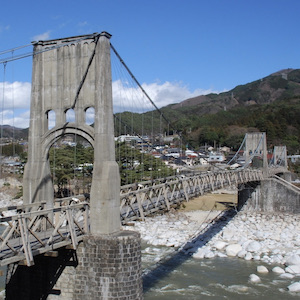
Tenpaku Park
Tenpaku Park is home to a great variety of things to see, including Momosuke Bridge, the Momosuke Fukuzawa Memorial Museum and Mountain History Museum, and the Mourning Girl Sculpture. Beautiful displays of azaleas can also be seen here in the Spring,
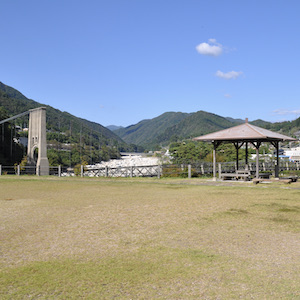
Tenpaku Park’s Azaleas (One of Nagiso’s Natural Monuments)
Six varieties of azaleas can be found in Tenpaku Park, one particular variety of which can only be found in and around Nagiso (appropriately named the Nagiso Azalea). The best time to see the azaleas is typically around the middle of Apri, though this may vary year to year depending on weather and climate conditions.
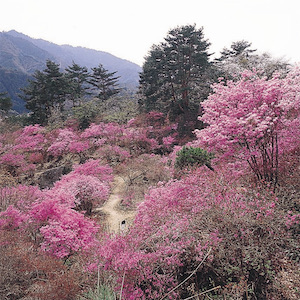
The Fukuzawa Momosuke Memorial Museum and The Mountain History Museum (Prefectural Treasures)
Built in 1919 as a summer retreat for Momosuke Fukuzawa, this building is now a museum dedicated to the life of Fukuzawa and his lover the famous geisha and actress Sada Yacco (a relationship that lasted for decades, but which was quite scandalous at the time). The museum contains many photographs, documents, and other items belonging to the two.The Mountain History Museum tells the story of the mountains of the Kiso Valley, and contains much of interest relating to both history and forest management. The museum is located in a late Meiji period building, which was originally located down the road in Tsumago-juku, before eventually being dismantled and placed in storage, and then finally being relocated here in 1990. * Opening Times: 9:30am – 4:30pm * Closed on Wednesdays (also closed in Winter) * Entry fee: 500 yen
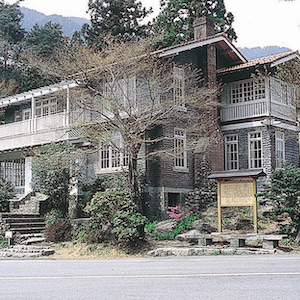
The Mourning Girl Sculpture
Built to commemorate the victims of a fatal landslide that occurred in 1952. The titular mourning girl sits upon a large rock that has been carved with the words of the message broadcasted to warn people of the disaster.
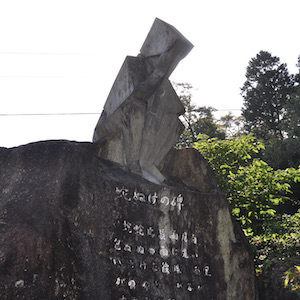
Yomikaki Power Station (Nationally Designated Important Cultural Property)
Along with Momosuke Bridge and the Kakizore Aqueduct, the Yomikaki Power Station has been officially recognized as an important cultural property from Japan’s historical period of modernization in the late 19th and early 20th centuries. It is a waterway style power plant, typical of such plants built in the Taisho Period (Yomikaki Power Station itself was built between November 1921 and December 1922).
